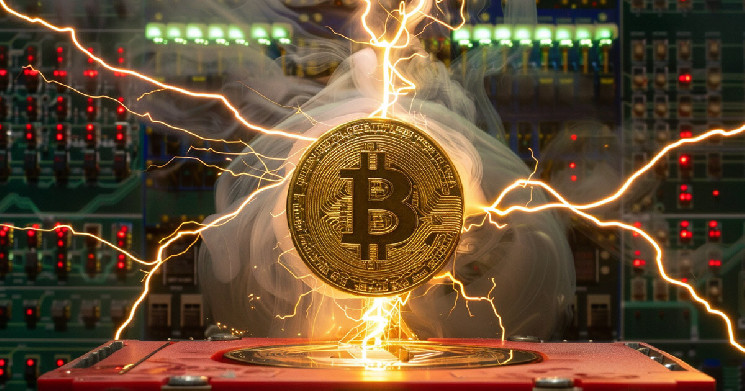Bitcoin block rewards will likely evolve significantly over the coming decade, driven by substantial shifts in Bitcoin prices and fee changes. One popular model for projecting future prices is the Power Law, coined by Giovanni Santostasi. Based on this model, Crypto has calculated the Bitcoin block reward over the next ten years.
The Power Law Model predicts Bitcoin trading within a set range, illustrated on the left of the table below by the upper and lower bound prices, with the regression fit aligning with a ‘fair price.’ The right-hand columns show the Bitcoin block reward based on these prices, considering future Bitcoin halvings.
Note that these figures do not account for fees paid to miners or changes in either the hash rate or Bitcoin difficulty. An increase or decrease in fees would directly alter the overall block reward, whereas changes in the hash rate and difficulty will make it harder or easier to mine Bitcoin, affecting the cost to mine Bitcoin.
The projections indicate a steady rise in the potential price of Bitcoin, with the upper bound price expected to increase from $274,548 in 2024 to $3,579,973 by 2034. Based on these price estimates, the corresponding block rewards suggest that miners could see their potential rewards at the upper bound price grow from approximately $857,965 in 2024 to $5,593,709 by 2034. However, the fair and lower bound prices, which provide more conservative estimates, show a different picture, with fair price block rewards starting at $215,903 in 2024 and increasing to $2,135,421 by 2034, and lower bound price rewards growing from $76,617 to $757,676 over the same period.
These projections stress the importance of efficiency and cost management for miners. For example, after the next halving in 2028, Bitcoin rewards could fall lower than they are today. As the block reward is halved approximately every four years, the reliance on transaction fees is likely to grow, making the network’s transaction activity a critical factor in maintaining profitability. Moreover, miners may face thinner margins if the hash rate increases without a corresponding rise in Bitcoin prices, highlighting the need for constant adaptation to the network’s evolving conditions.
The anticipated increase in Bitcoin prices suggests a potential for higher returns, but this is tempered by the risks associated with increased difficulty and the possible reduction in block rewards after halving events. Miners who can innovate and adapt to these changes by using more energy-efficient hardware or diversifying revenue streams may be better positioned to thrive in this evolving landscape. The long-term outlook indicates that while rewards per block may grow in absolute fiat terms, the path to these rewards will likely become more challenging, requiring miners to optimize their operations continuously.
As of press time, the Bitcoin reward per block is 3.125 BTC, which equates to around $183,437. Should Bitcoin follow the Power Law Model through to 2034, the reward could increase by 2,905% to reach as high as $5,593,709. With transaction fees included, Bitcoin mining in 10 years could be highly lucrative if managed efficiently. With roughly 144 Bitcoin blocks produced daily, this would equate to roughly $792 million worth of Bitcoin per day and $5.5 billion per week.

























































![What Is Asset Tokenization? Types, Why It Matters Now [2025]](https://coininsights.com/wp-content/uploads/2025/05/asset_tokenization-360x180.png)



























I loved as much as you will receive carried out right here The sketch is attractive your authored material stylish nonetheless you command get got an impatience over that you wish be delivering the following unwell unquestionably come more formerly again since exactly the same nearly a lot often inside case you shield this hike
Alguém essencialmente me deu uma mão para fazer postagens significativas, devo afirmar que é a primeira vez que visito sua página e até agora me surpreendi com a pesquisa que você fez para criar esta postagem em particular incrível. Excelente trabalho
where to get clomid tablets where to get clomid price how much does clomid cost without insurance how to get generic clomid pill where to get generic clomid without dr prescription where can i buy clomid pill clomid bula profissional
I am actually delighted to coup d’oeil at this blog posts which consists of tons of of use facts, thanks towards providing such data.
The depth in this tune is exceptional.
zithromax online order – tinidazole 500mg cheap order metronidazole 200mg online cheap
buy rybelsus for sale – generic cyproheptadine 4 mg buy periactin 4 mg without prescription
buy motilium generic – order motilium online order flexeril 15mg
order inderal 10mg online cheap – buy inderal 20mg methotrexate 10mg ca